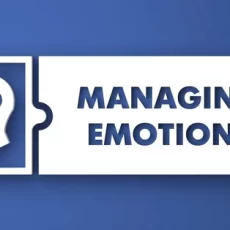There are methods in Buddhist practice devoted to cultivating loving – kindness and compassion. Here, the meditations try to generate and all – pervading sense of benevolence, state in which love and compassion permeate the entire mind. They let pure love and compassion be the only object of their thoughts: intense, deep, and without any limit or exclusion. Although not immediately focussing on particular persons , altruistic love and compassion include a total readiness and unconditional availability to benefit others. Happyho also provide best Meditation classes in Noida and Delhi NCR India area.
Focussed attention, or concentration, requires focussing all one’s attention upon chosen object and calling one’s mind back each time it wanders. Ideally this one pointed concentration should be clear, calm and stable. It should avoid syncing into dullness or being carried away by mental agitation.
Open presence is a clear, open, vast and alert state of mind, free from mental constructs. It is not actively focussed on anything, yet it is not distracted. The mind simply remains at easy , perfectly present in a state of pure awareness. When thoughts intrude, the meditator does not attempt to interfere with them, but allows the thoughts to vanish naturally.
Visualisation consists of reconstituting in the mind’s eye a complex mental image, such as the representation of a Buddhist diety. The Meditator begins by visualising as clearly as possible every detail of the face, the clothes the posture and so on, inspecting them one by one. Lastly, he visualises the entire diety and stabilises that visualisation.
These various meditations are among the many spiritual exercises that a practicing buddhist cultivates over the course of many years, during which they become ever more stable and clear.
In the Lab there are two main ways to test the meditators. Electroencephalograms ( EEG) allow changes in the brain’s electrical activity to be recorded with very accurate time resolution, while functional magnetic resonance imagining (FMRI) measures blood flows in various areas of the brain and provides an extremely precise localisation of cerebral activity.
The meditator alternates thirty seconds neutral periods with 90 second periods in which he generates one of the meditative states. The process is repeated many times for each mental state. In this instance, the instrument measuring the meditators was equipped with 256 sensors. the electrodes detected striking difference between novices and expert meditators. During meditation on compassion, most experienced meditators showed a dramatic increase in the high – frequency brain activity called Gama waves, ” of a sort that has never been reported before in the neuroscience literature, ” says Richard Davidson. It was also found that movement of the waves through the brain was far better coordinated or synchronised than in the control group, who showed only a light increase in gama wave activity while meditating. This seems to demonstrate that ” the brain is capable of being trained and physically modified in ways few people can imagine”. And that the meditators are able deliberately to regulate their cerebral activity. By comparison, most experienced subjects who are assigned a mental exercise – focussing on an object or an occurrence, visualising an image and so on – are generally in capable of limiting their mental activity to that one task.
One of the most interesting findings is that, that the monks who had spent the most years meditating generated the highest levels of Gama waves. This lead Richard Davidson to speculate that ” Meditation not only changes the workings of the brain in the short term, but also quiet possibly produces permanent changes. “




